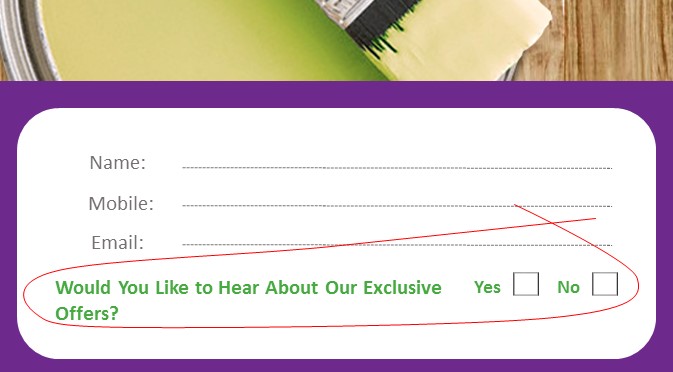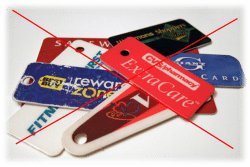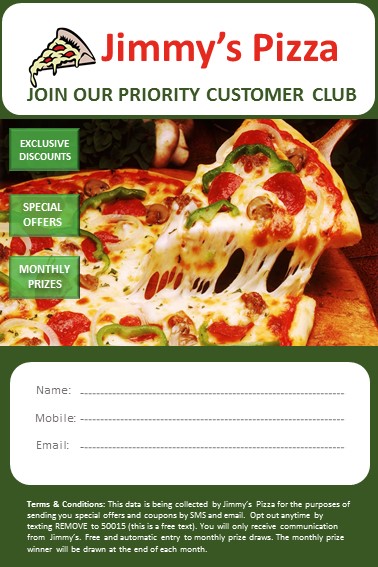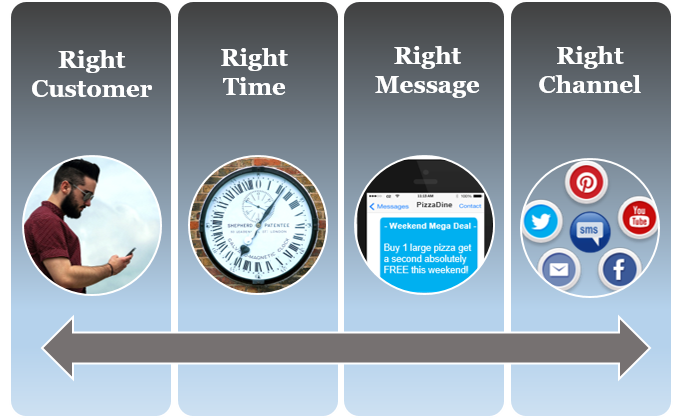Permission Marketing for Fast-Food Retailers

We are a society obsessed with efficiency, reliability and convenience, whether it’s deciding what to eat, where to shop or how to get there.
A pizzeria might make the best pizza in the world but go out of business within a month. Why?
Consumers don’t want the best pizza in the world, they want the most convenient pizza in the world.
Convenience is what’s right on front of them. To be convenient, you must be visible. You need to be present in the customer’s thought process when they are most likely to purchase, and to do that you need to implement a targeted, data-driven marketing strategy that involves reaching the right customers at the right time, with the right message through the right channel.
Permission Marketing
Permission marketing is the privilege of delivering anticipated, personal, and relevant messages to people who want to receive them.
Before you start firing out your targeted marketing campaigns, you need to get consent from your customers. By law, permission is needed to market to anyone directly; without it, you’re not only breaching data regulations but spamming customers will most likely send them running to your competitors.
Getting permission isn’t the most amazingly exciting experience for us over-eager marketers, but right now it’s about capturing the personal information and permission needed to build a customer database and long-term relationship rather than generating instant sales.
Building your Database
Permission marketing is easiest if customers are in store and buying from you as the customer is clearly already familiar with your brand. It won’t be hard to get their permission and details to send them offers in the future if they like what they’re eating (which I’m sure they will).
What Data Should I Capture?
 We believe that the most valuable data to acquire from a customer in the fast-food industry is their mobile number. A mobile number is the easiest way to record transactions for targeted marketing without the hassle of cards, fobs or other loyalty gadgets that usually get lost or left at home. Additional information such as name, email, birthday and buying preferences can also be captured in-store to personalise your marketing messages.
We believe that the most valuable data to acquire from a customer in the fast-food industry is their mobile number. A mobile number is the easiest way to record transactions for targeted marketing without the hassle of cards, fobs or other loyalty gadgets that usually get lost or left at home. Additional information such as name, email, birthday and buying preferences can also be captured in-store to personalise your marketing messages.
If a customer orders over the phone or in-store, taking their mobile number is the easiest way to record their transaction data and obtain permission to send them exclusive offers by SMS in the future. Unlike e-mail, social and paid advertising, an SMS is fast, direct and can be triggered based on purchasing patterns recorded in their transactions.
What’s the sense in sending your best offers to customers who buy from you every Friday night regardless?
Data-driven SMS marketing allows you to target lapsing customers with high-value offers while keeping your regular customers happy with medium-value offers.
How Can I Capture Data In Store?
 In-store data capture mechanisms can be as simple as pen and paper loyalty club sign up form. For a more advanced and paper-free system, a tablet device at the point of sale is just as efficient.
In-store data capture mechanisms can be as simple as pen and paper loyalty club sign up form. For a more advanced and paper-free system, a tablet device at the point of sale is just as efficient.
Running an in-store competition for loyalty club sign-ups is the quickest way of building your database; a high-value prize will reap the most entries so do try to put something good up for grabs like event tickets, eat free for 1 month/ 6 months, a high-value voucher or a new tech gadget.
For customers who order over the phone or online, you most likely have already captured their phone numbers for order confirmation or delivery. Now all you need is their permission. This can be attained easily by sending what is called a “permission text” – a simple notification stating they will receive exclusive offers in the future and if they wish to opt-out they can do so using the opt-out details you provide.
How do I capture customer data outside of the store?
Inevitably, customers are reluctant to sign up to loyalty clubs if they’re not familiar with the brand, so in this case, running a brand awareness campaign or competition with a high-value incentive is the best strategy for permission marketing.
For capturing mobile numbers for permission marketing, one extremely effective campaign is running Text- to-Win or Text- to-Join competitions. Mobile marketing providers offer this feature either independently or as part of their SMS marketing service.
to-Join competitions. Mobile marketing providers offer this feature either independently or as part of their SMS marketing service.
The reason these campaigns work so well is that once you’ve outlined the terms and set the campaign live, every entry is a number automatically uploaded to your database, meaning you can pretty much sit back and watch the numbers roll in. You can also ask for the customers’ email address along with their answer to the competition if you’re considering email marketing. These campaigns can also be advertised anywhere – social media, radio, television, so reach potential is massive.
Why Text-To-Win/Text-To Join
- Off the chart in generating brand awareness
- Free for the customer to enter
- Simple to set up
- Customers are voluntarily opting in to your loyalty club
- Numbers are automatically uploaded to your database
- Competitions can be promoted anywhere – social media, in-store, print, radio.
In a nutshell, permission marketing is easy if you use the right tactics to build your database. Once you’ve got your database and permission the hard part is over; now it’s up to you to implement a data-driven strategy and reach your customers at the right time with the right message through the right channel.
For more information on data-driven strategies for retailers, contact a member of our team. We’re happy to help!
